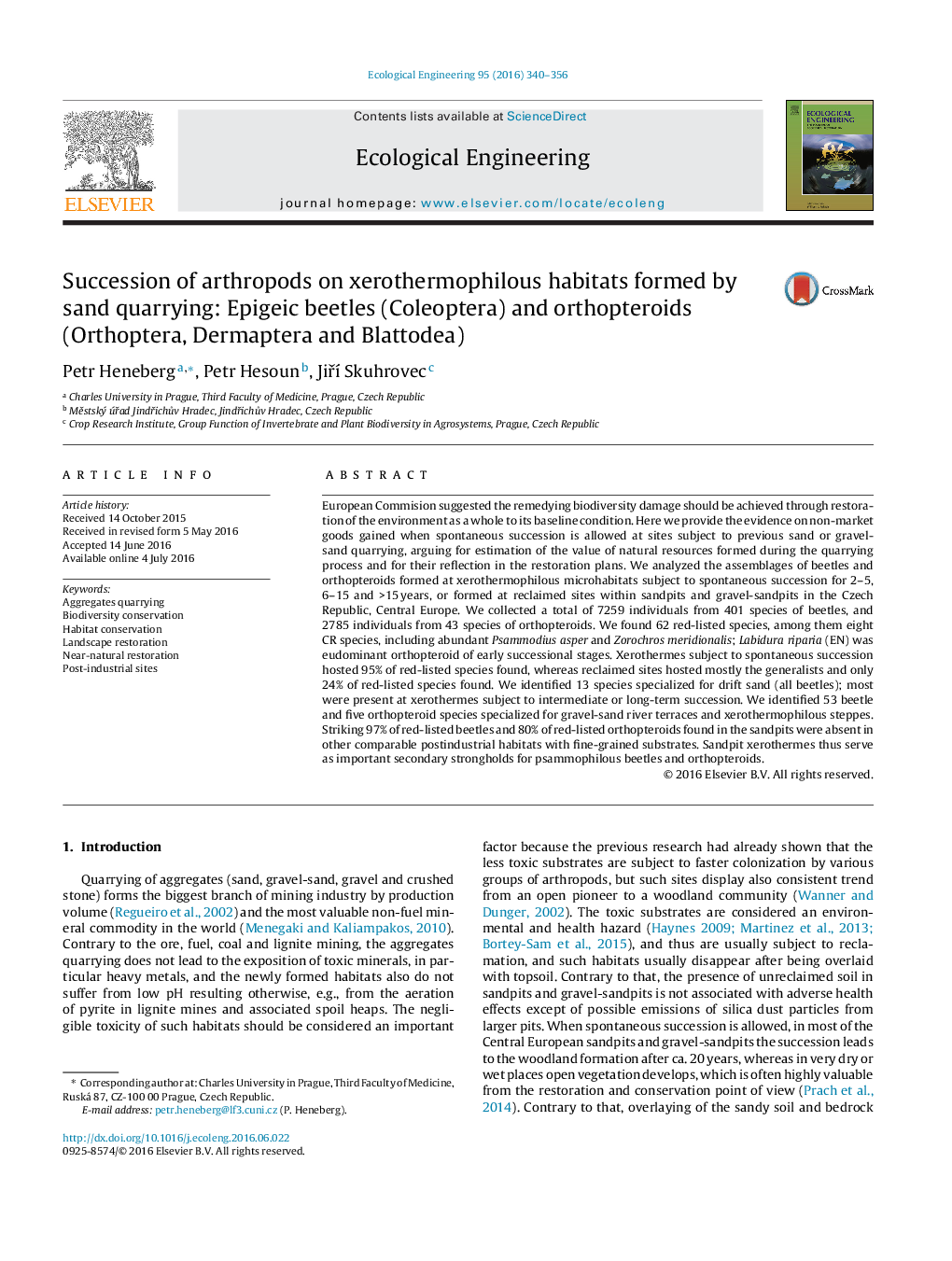| کد مقاله | کد نشریه | سال انتشار | مقاله انگلیسی | نسخه تمام متن |
|---|---|---|---|---|
| 4388459 | 1618004 | 2016 | 17 صفحه PDF | دانلود رایگان |

• Non-market goods gained due to spontaneous succession at sites subject to quarrying.
• We found 62 red-listed species of beetles and orthopteroids at sandpit xerothermes.
• Psammodius asper and Zorochros meridionalis (both CR) are abundant in sandpits.
• Industrial areas are key replacement habitats for disturbance-dependent species.
• Biodiversity benefits only from a long-term presence of open sandpit xerothermes.
European Commision suggested the remedying biodiversity damage should be achieved through restoration of the environment as a whole to its baseline condition. Here we provide the evidence on non-market goods gained when spontaneous succession is allowed at sites subject to previous sand or gravel-sand quarrying, arguing for estimation of the value of natural resources formed during the quarrying process and for their reflection in the restoration plans. We analyzed the assemblages of beetles and orthopteroids formed at xerothermophilous microhabitats subject to spontaneous succession for 2–5, 6–15 and >15 years, or formed at reclaimed sites within sandpits and gravel-sandpits in the Czech Republic, Central Europe. We collected a total of 7259 individuals from 401 species of beetles, and 2785 individuals from 43 species of orthopteroids. We found 62 red-listed species, among them eight CR species, including abundant Psammodius asper and Zorochros meridionalis; Labidura riparia (EN) was eudominant orthopteroid of early successional stages. Xerothermes subject to spontaneous succession hosted 95% of red-listed species found, whereas reclaimed sites hosted mostly the generalists and only 24% of red-listed species found. We identified 13 species specialized for drift sand (all beetles); most were present at xerothermes subject to intermediate or long-term succession. We identified 53 beetle and five orthopteroid species specialized for gravel-sand river terraces and xerothermophilous steppes. Striking 97% of red-listed beetles and 80% of red-listed orthopteroids found in the sandpits were absent in other comparable postindustrial habitats with fine-grained substrates. Sandpit xerothermes thus serve as important secondary strongholds for psammophilous beetles and orthopteroids.
Figure optionsDownload as PowerPoint slide
Journal: Ecological Engineering - Volume 95, October 2016, Pages 340–356